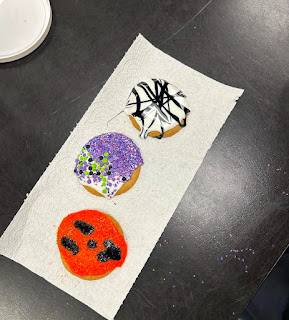WHIPLASH DEPICTS MUSIC SCENE
April 10, 2015
New movie, Whiplash, shows how music influences a relationship between a drummer and an instructor.
Photo By: Brea Jones, Photographer
By: Logan Zelk, Reporter
At the Oscars this year, Whiplash was one of the buzzing movies of the night. The film’s topic of competitive jazz music and rigor, specifically between a drummer and his eccentric teacher; but one had to wonder, how realistic was the movie to competitive musical institutions??
The opening scene of Whiplash shows a young Andrew, played by Miles Teller, practicing the drums in dark solitude. Busting through the door is old, clean shaven Terence Fletcher, played by J.K. Simmons, whose role is not yet understood. He asks the young man to play a specific pattern, and so Andrew does. Before Andrew even finishes, Fletcher is gone, leaving Andrew dejected. Of course, later in the movie Andrew is recognized and moves on, only to discover a relationship with his music and his role with Fletcher as one bordering agony and toxic, whittling away his few relationships in the pursuit of being a great drummer.
Scenes include throwing chairs, heavy routines, shouting, bleeding hands and bloodied drums; perhaps the most exaggerated example being Andrew walking away from a car crash, battered and broken, to perform his role in fear of being replaced in the most admired jazz ensemble at Juilliard.
When seeing the emotionally intense scenes rolling across the screen, one can only wonder how accurate the movie really is of high caliber music scenes. Individuals from several different musical environments were asked about their experiences in the musical world.
Senior Nick Seier says, “What the movie portrayed was more of a relationship, albeit an extremely interesting relationship, between the drummer and the instructor than music. That sort of competition certainly isn’t everywhere, but there are some extreme examples, like Buddy Rich, who the movie based a lot off of.”
This noted, Seier does perform within a non-competitive band environment, and performs more for recreation.
Band instructor, Mr. P.L. Malcolm, further illuminates the conditions teaching at SHS, saying, “There are different styles in teaching music; the people change the settings. There are different ways to motivate people, and that’s not what we have, but it has happened in the past with other institutions. Sometimes music teaching is very extreme.”
In other music environments, more similar situations to the movie arise, especially the world of professional jazz.
In an online interview, jazz musician Tim Monaghan, reflects on past experiences as a student for competitive jazz school. He mentions that he had a few teachers that would “yell and scream profanities,” but also mentioned that the ensemble that left people in tears was the “hottest, sharpest, hardest-to-get-into ensemble at the school.”
Similar to jazz, orchestra can reach high levels of tension as well, given the many aspiring players and small seats to compete for.
Junior Jenna Dovydaitis observes similar pressures as familiar within orchestra. Dovydaitis says, “Personally, I’m not so competitive yet, but within a few years, some 6 or 7 years like others, [the music scene] can get really competitive, but there’s always an aura of support.”
When asking whether or not the Whiplash is accurate, one can say that it is to a degree. The movie does not seem to give an entirely accurate depiction of the wide-scale theaters of music, but rather a distinct type of instructor and the relationship he shares with an aspiring student. This isn’t to say that professional music isn’t tough, but it certainly means that not every future jazz star had a brass cymbal thrown at their heads some time in their lives — only Fletcher can do that.
























